Crafting Your Perfect Cup: A Comprehensive Guide to Masterful Coffee Brewing Techniques at Home
Mastering various home brewing methods such as pour-over, French Press, espresso, cold brew, and ice…….
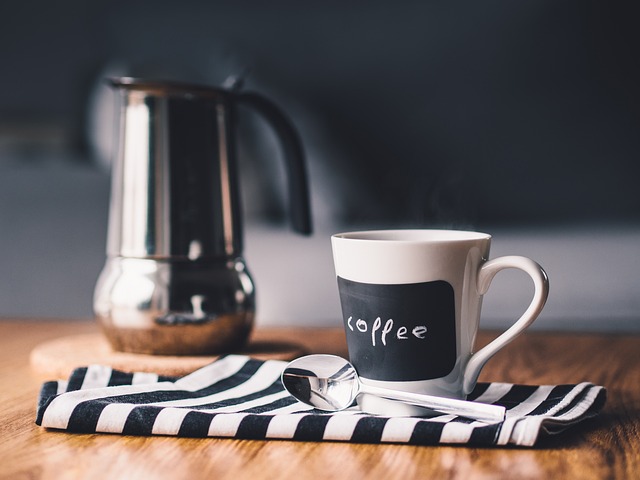
Mastering various home brewing methods such as pour-over, French Press, espresso, cold brew, and iced coffee each offer distinct flavors and require specific techniques and equipment adjustments. For pour-over, aim for a water temperature of 195°F to 205°F, a medium-fine grind similar to sea salt, a coffee-to-water ratio of about 1:16, and a slow, consistent pour. With the French Press, use a coarser grind, immerse the grounds for 4 minutes, then press gently after a brief bloom. Espresso demands fine ground beans extracted at high pressure into a precise quantity of shot, typically 25-30 seconds for a double shot. Cold brew involves soaking coarsely ground beans in cold water over 12-24 hours for a smooth, less acidic flavor. Iced coffee can be made by quickly chilling hot coffee, which results in a more bitter and acidic taste. Innovative home recipes incorporate spices, flavors, and health benefits to create unique coffee experiences. Additionally, achieving café-quality coffee at home requires high-quality beans, precision in grinding, temperature control, and proper brewing technique. Milk frothing is an essential skill for those who enjoy cappuccinos, lattes, or latte art, necessitating fresh milk, precise heating, and careful agitation to create a smooth microfoam that enhances the sensory experience of their coffee creations.
Discover the myriad ways to elevate your coffee experience from the comfort of your home. This comprehensive guide delves into the artistry behind pour-over techniques, unlocking the secrets to a flawless brew. Dive into the intricacies of mastering the French press for a full-bodied cup that rivals any café. Explore the nuances of espresso brewing, learning to extract the perfect shot with ease. Compare cold brew and iced coffee, understanding their distinct flavor profiles and preparation methods. Venture beyond the ordinary with our top five innovative coffee recipes, each crafted for the curious connoisseur. Perfect your drip coffee maker skills for a café-quality morning boost. Acquire the skill of frothing milk at home to enhance your homemade coffees. Indulge in healthy, guilt-free coffee recipes that offer a myriad of health benefits. Elevate your coffee routine and transform your kitchen into a personal barista’s haven with these expert tips and tricks.
- Perfecting Pour-Over Coffee Techniques at Home
- French Press Mastery: A Step-by-Step Guide to Rich Brews
- Espresso Essentials for Home Baristas
- Cold Brew vs. Iced Coffee: Brewing Methods Compared
- Top 5 Innovative Coffee Recipes for the Adventurous Brewer
- Drip Coffee Maker Craft: Achieving Café-Quality Coffee
- Frothing Milk at Home: The Key to Barista-Style Coffee
Perfecting Pour-Over Coffee Techniques at Home
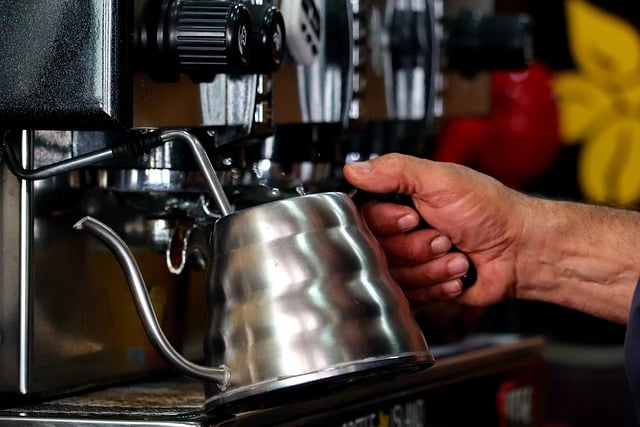
Mastering the art of pour-over coffee can elevate your home brewing experience to new heights, offering a nuanced and flavorful cup that rivals café quality. The pour-over method is a delicate dance between water temperature, grind size, coffee-to-water ratio, and the rate of pouring. Begin by heating your kettle; the ideal water temperature for pour-over coffee is just off the boil, around 195°F to 205°F (90°C to 96°C). This temperature range helps to extract the right balance of flavors without over-extraction or bitterness.
Once your water is heated, grind your coffee beans to a medium-fine consistency—think somewhat coarser than sea salt. Use a 1:15 to 1:17 coffee-to-water ratio; for every gram of coffee, you’ll use approximately 15 to 17 grams of water. Place your filter paper in the pour-over brewer, with the seam folding over the edge of the brewer and secured to prevent any grounds from seeping through during brewing. Then, add a small amount of water to saturate the coffee grounds, allowing them to ‘bloom’ for about 30 seconds. This allows the coffee to degas and can enhance the flavor of your brew. After blooming, continue pouring in a slow, circular motion over the coffee bed, ensuring all grounds are wet. The entire process from start to finish should take about three to four minutes. Experiment with different grind sizes, water temperatures, and pouring techniques to perfect your pour-over coffee at home. Each variable can significantly affect the taste and body of the coffee, so take notes on what works best for you and your palate.
French Press Mastery: A Step-by-Step Guide to Rich Brews
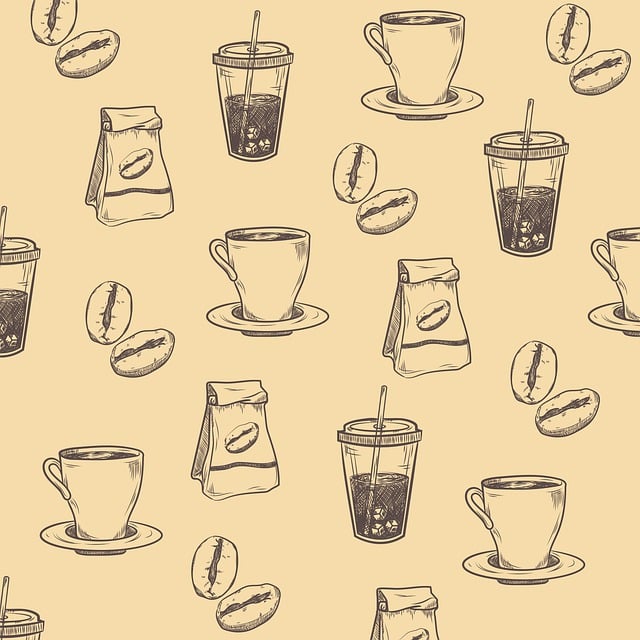
Mastering the French Press method for brewing coffee is a rewarding skill that yields rich, full-bodied coffee with minimal equipment. To achieve this, start by boiling your water to ensure it’s at the correct temperature – typically just off the boil, around 90-96°C (195-205°F). This helps in extracting the best flavors from the coffee grounds.
Begin by grinding your coffee beans to a medium coarse consistency – think sea salt-sized grains. For every cup of water, use about 1 tablespoon of coffee. Place the ground coffee in the bottom of your French Press. Once your water is at the right temperature, carefully pour it over the grounds, saturating them completely. Stir gently to ensure all the grounds are wet. Then, set a timer – a standard brew time is four minutes. After this time has elapsed, press the plunger slowly and steadily until it reaches the bottom of the carafe, which separates the coffee from the grounds. Pour your rich brew into a preheated cup or decanter to serve. Remember to grind fresh and adjust brewing parameters like grind size, water temperature, and brew time based on personal taste preferences for the best results. With practice, you’ll perfect this method and consistently enjoy the satisfying aroma and deep flavor profile of your French Press coffee at home.
Espresso Essentials for Home Baristas
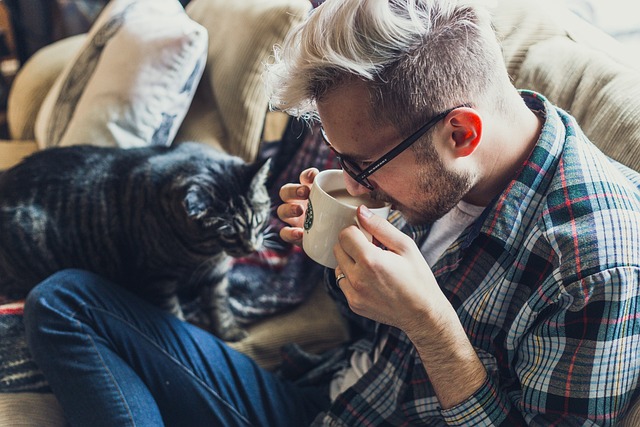
Crafting the perfect espresso at home requires a blend of precision, skill, and the right equipment. At the heart of every successful home espresso setup is a high-quality espresso machine. These machines come in various forms, including pump-driven models that mimic professional setups and simpler stovetop options like the Moka Pot. Regardless of your choice, key features to consider include the quality of the boiler, the durability of the machine, and its ability to produce consistent temperature across all shots. The grind is equally important; a burr grinder will provide the uniform particle size necessary for optimal extraction. The coffee-to-water ratio should be around 1:2, which means for every gram of coffee, you’ll need about two grams of water. Fresh, finely ground beans are essential—the fresher, the better, as the flavor and aroma degrade over time.
Once your machine and grinder are set up, it’s all about technique. The amount of coffee packed into the portafilter should be evenly distributed for an equal extraction; this is where the skill of dosing and tamping comes into play. A consistent tamp pressure ensures uniform resistance during the espresso extraction. The grind size must be fine enough to allow for a slow, steady pour through the espresso machine, typically taking around 25-30 seconds for a double shot. The resulting crema—a thick, golden foam on top of the espresso—is indicative of a good extraction and a well-prepared coffee. Remember to maintain cleanliness in your equipment, as oils and residues can affect both taste and machine performance. With these essentials in place, you’re well on your way to mastering home espresso brewing and creating cafe-quality coffee.
Cold Brew vs. Iced Coffee: Brewing Methods Compared
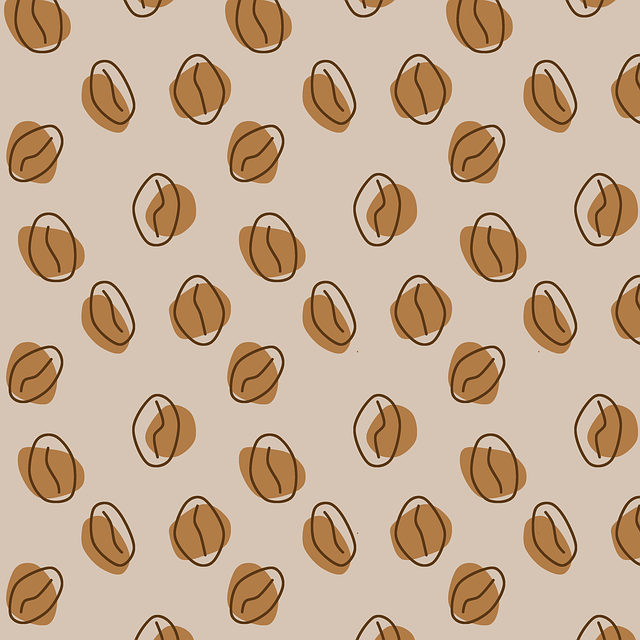
Cold brew and iced coffee are two distinct methods of enjoying chilled coffee beverages, each with its own unique characteristics and preparation techniques. Cold brew coffee is made by steeping coarsely ground beans in room temperature or cold water for an extended period, typically between 12 and 24 hours. This slow extraction process yields a smooth, low-acid brew with a rich body and chocolatey undertones. The use of cold water minimizes the extraction of bitter compounds, which is why cold brew often has a sweeter taste compared to its hot-brewed counterpart. The result is a highly concentrated coffee extract that can be diluted with water or milk to create the final drink.
In contrast, iced coffee is traditionally made by brewing with hot water and then cooling the coffee to serve over ice. This rapid brewing method, whether through a traditional drip or espresso machine, extracts a more bitter and acidic flavor profile due to the quicker extraction process. The coffee is then poured over ice to prevent dilution from melting. While this method can produce a refreshing beverage during warmer months, the taste and strength of the coffee are often influenced by the brewing temperature and time used for the hot extraction. Both cold brew and iced coffee offer different experiences and can be tailored to individual preferences; however, their differences in brewing methods lead to distinct flavor profiles that coffee enthusiasts can appreciate.
Top 5 Innovative Coffee Recipes for the Adventurous Brewer
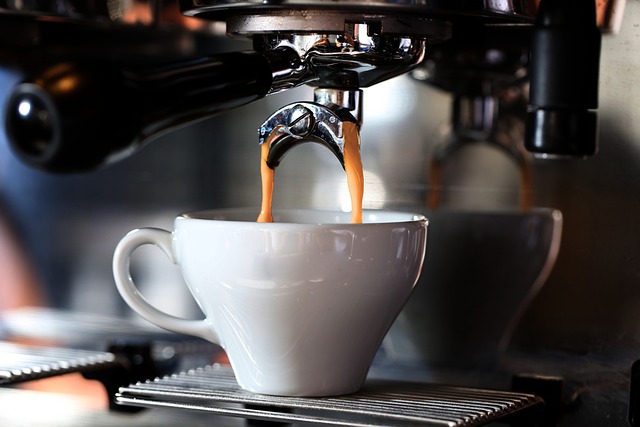
1. For the adventurous home brewer seeking to push the boundaries of coffee flavor, the world of innovative recipes offers a plethora of options to explore. One such recipe is the ‘Spiced Maple Latte’, which infuses warm autumnal spices like cinnamon and nutmeg with a touch of maple syrup for a sweet and aromatic twist on the classic latte. Another intriguing concoction is the ‘Coffee-Infused Cold Brew with Dark Chocolate and Sea Salt’, which combines the refreshing qualities of cold brew with the rich, deep flavors of dark chocolate and a hint of sea salt for a sophisticated taste experience.
2. The ‘Hibiscus Flower Iced Coffee’ is a refreshing summer delight that incorporates the tartness of hibiscus flowers into your iced coffee, creating a bright and fruity profile that contrasts beautifully with the richness of coffee. For those looking for a caffeine-kick with a twist, the ‘Earl Grey Espresso’ merges espresso with bergamot-infused tea for a cup that’s both complex and invigorating. Additionally, the ‘Nitro Cold Brew Coffee with Cascara Sugar’ elevates cold brew to new heights by infusing it with nitrogen for a creamy, velvety texture and a dash of cascara sugar for a subtle floral sweetness. Lastly, the ‘Adaptogenic Mushroom Coffee’ blends traditional coffee with adaptogens like cordyceps and reishi mushrooms to not only invigorate but also promote well-being, catering to those who desire their coffee with functional benefits. These recipes are a testament to the boundless creativity in the world of coffee brewing, offering a journey for the senses that is both exciting and rewarding for any enthusiast willing to experiment.
Drip Coffee Maker Craft: Achieving Café-Quality Coffee
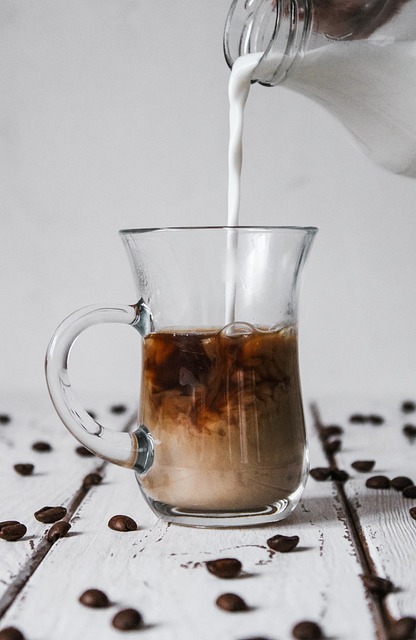
Creating café-quality coffee at home using a drip coffee maker is both an art and a science, requiring attention to detail and a understanding of the variables that influence brew quality. The drip coffee maker craft begins with selecting the right beans; opt for freshly roasted, high-quality whole beans for the best flavor. Grind the beans just before brewing to ensure maximum aroma and taste. The grind size should be medium-fine to allow for proper extraction—too coarse and the coffee will be watery and under extracted; too fine and it may lead to over extraction and bitterness.
Once your coffee is ground, prepare your drip coffee maker by rinsing a paper filter with hot water if using one, to avoid any papery off-flavors. Fill the reservoir with fresh, filtered water, as the quality of the water can significantly affect the taste of the coffee. Set the coffee maker according to your desired strength and number of cups. The temperature of the water should be between 195°F and 205°F (85°C to 96°C) for optimal extraction—most drip coffee makers regulate this automatically.
As the water passes through the ground coffee, it extracts the flavors and oils, creating a balanced cup. Monitor the brewing process to ensure even saturation of the grounds; uneven saturation can lead to uneven extraction. After the brew cycle is complete, immediately serve the coffee to enjoy its peak flavors. Remember, the freshness of the coffee, precision in grinding and measuring, as well as the quality of the water all contribute to achieving that café-quality cup at home. With practice and attention to these details, you can consistently produce a delicious brew that rivals your favorite coffee shop.
Frothing Milk at Home: The Key to Barista-Style Coffee
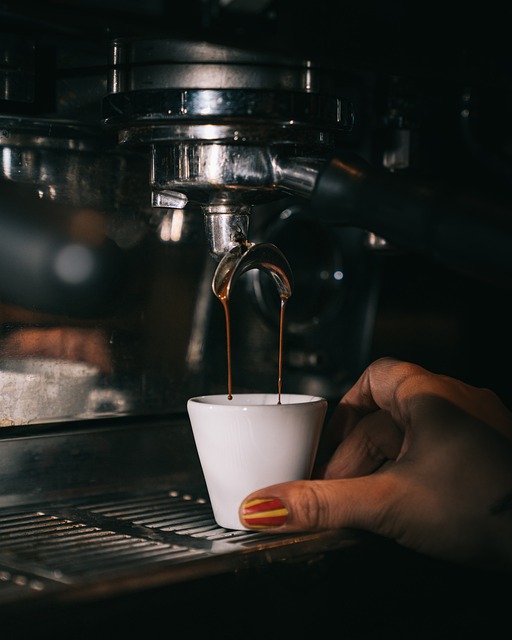
mastering the art of frothing milk at home is a pivotal step in achieving barista-style coffee. It’s a skill that elevates your morning brew from ordinary to extraordinary, transforming a simple cup of coffee into a creamy, velvety experience. The process of frothing milk involves heating and agitating the milk to create microfoam, which is essential for recipes like cappuccinos, lattes, and latte art. To achieve this, you’ll need a suitable tool such as a handheld milk frother, a standalone frothing machine, or even a traditional stovetop method with a milk jug and wand. The key to successful frothing lies in the temperature and technique: ensure your milk is fresh and cold before frothing, heat it gently to reach the ideal 150°F (65°C), and use quick, precise movements to agitate the milk. This not only traps air bubbles but also breaks down the protein and fat structures into fine, pliable microfoam. The result is a smooth texture that allows for beautiful latte art or simply enhances the taste and mouthfeel of your coffee. With practice, you’ll develop an intuitive feel for the consistency and temperature of the milk, enabling you to consistently create barista-quality foam right at home.
Exploring various coffee brewing methods offers a world of flavors and experiences for enthusiasts and casual drinkers alike. This guide has taken you through the intricacies of pour-over, French press, espresso, cold brew, and iced coffee, as well as innovative recipes that elevate your morning brew into an art form. Whether you’re a beginner or an experienced barista, understanding the nuances of each method can help you craft café-quality coffee right from your kitchen. Remember to embrace the learning process, experiment with new techniques, and most importantly, enjoy the journey of discovering your perfect cup. Happy brewing!






